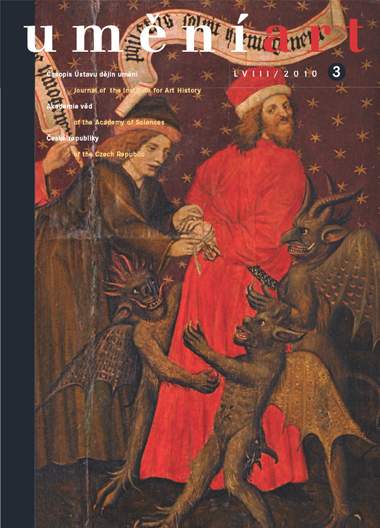Veronika Horová
Pozdně středověká reprezentace šlechty a měšťanů Prachatic. Nově odkryté nástěnné malby v kostele sv. Jakuba
The late Gothic Church of St James the Greater in Prachatice is known especially for its architecture. Any description of the provost's church would be incomplete without its internal features and earliest decorations - the newly uncovered mediaeval murals. These paintings, restored in 2009, cover two fields of the presbytery below the parapet cornice on both sides and including the west side of the triumphal arch. The paintings continue along the walls behind the Baroque benches, though there they are not exposed. Paintings of the Martyrdom of St Sebastian, The Madonna between Sts Barbora and Catherine, The Last Judgement, and The Mouth of the Leviathan are located side by side on the southern wall, separated from each other by green strips. On the opposite wall there are five inscribed coats-of-arms around St Wenceslas, and St Veronica and the Madonna with Jesus are depicted inside painted frames. Next is Christ as the Man of Sorrows and St Jerome with the Lion in Landscape. The scenes of Christ and St Jerome belong to the oldest mediaeval layers. Both of these good-quality paintings drew on the Czech soft style of the 1370s and 1380s, but they also indicate the beginnings of the Czech beautiful style. The stylised architecture, the still life motif, and the interest in space in the landscape indicate the paintings originated around 1390-1400. The late Gothic layers, dating from 1480-1500, were created in connection with the contemporary owners of Prachatice, the Lords of Rabštejn, and their coat-of-arms is painted at the feet of St Wenceslas. The compositions of most of the paintings are based on prints by German masters. The Madonna with the Saints is based mainly on domestic sculpture and paintings from the late 15th century, as is the painting of St Wenceslas in Armour. The paintings are done al secco on lime plaster. The late Gothic scenes, with the exception of the Madonna with Jesus, were created by a very skilled artist. The confidence of his brushstrokes is apparent in the black base drawing. However, the well-preserved bright colours make the whole thing look somewhat flat.
Full-text in the Digital Library of the Czech Academy of Sciences:
https://kramerius.lib.cas.cz/uuid/uuid:aa886d23-0e7e-ce93-4c4d-c2171efdb9b0
< back

